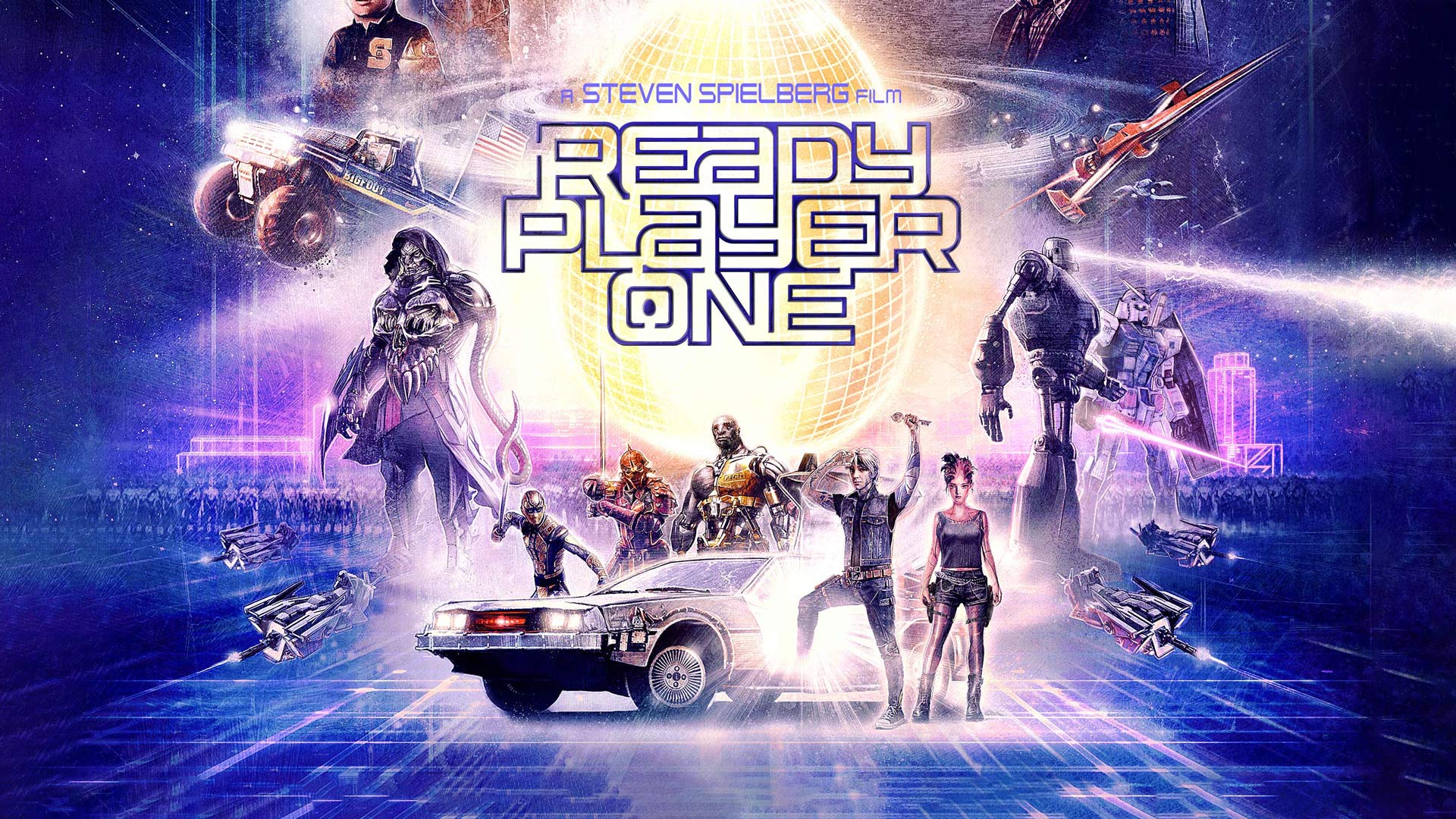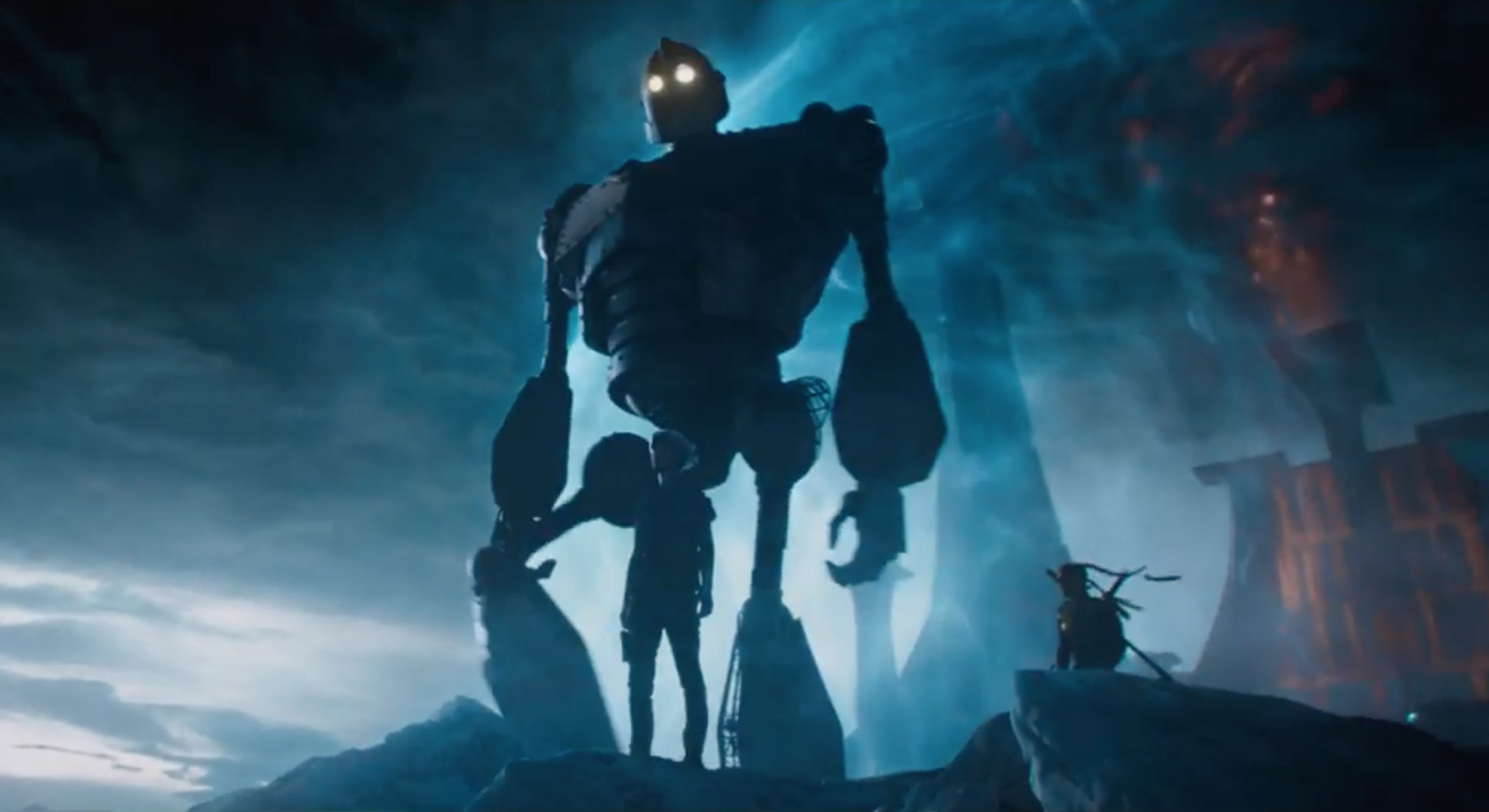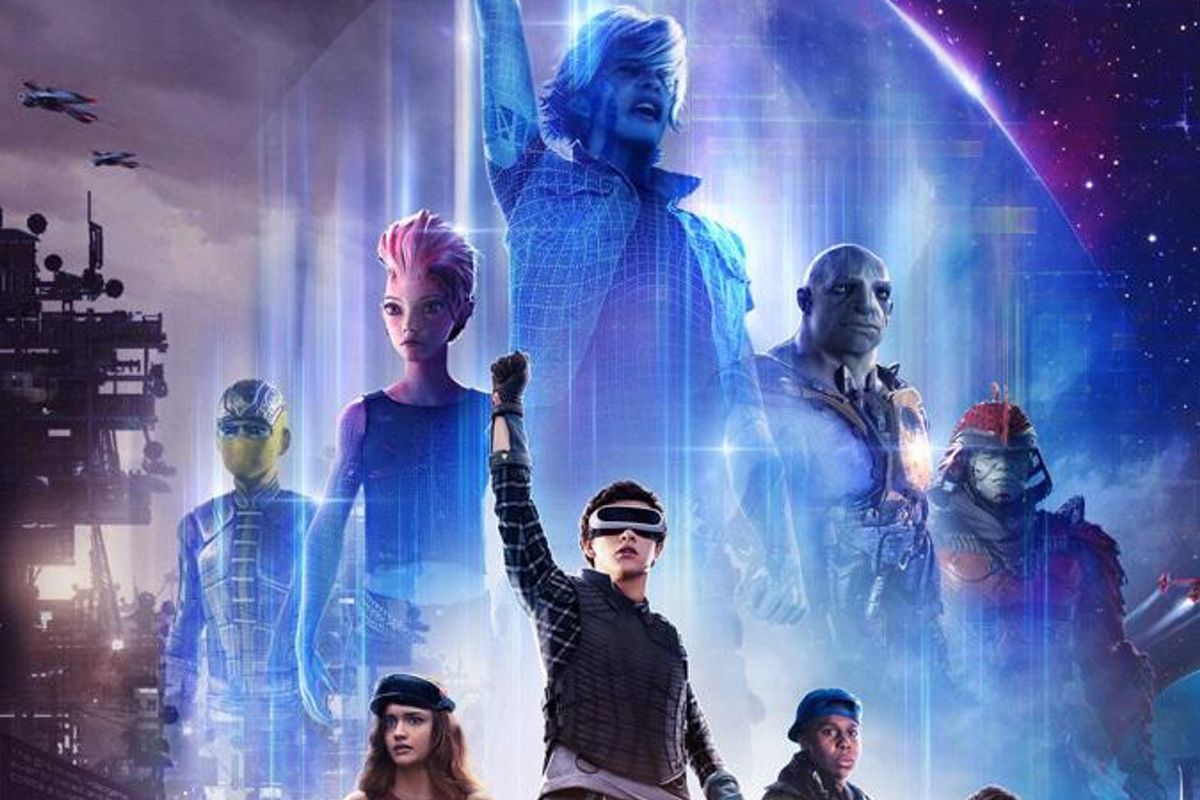Ready Player One is both the name of a 2011 science fiction novel by Ernest Cline as well as the 2018 film adaptation by Steven Spielberg. What is funny about the gap between the book and the film release is distance we as a culture have traveled in terms of interest and tolerance for referenced material. From the genuine excitement for films like Lord of the Rings and X-men to the almost pitiful pleas for films not based on books, we as a culture have endured the trials of adaptation. The gaming and fandom community has evolved from passive enthusiasts of consumption to something more complex and with varying degrees of seriousness and toxicity. Things are very different than they were 17 and 7 years ago and something that was intended as escapist fantasy has morphed into something with more complication.
Ready Player One, the novel, was never going to be a ground shaking achievement in the literally field and will probably not win any accolades in the future for writing. Despite its dedication to being apart of the same echelon as its referenced material, Read Player One was entertaining in its eye rolling quest to be as hyper authentic with its pop culture knowledge and proved to be memorable enough for film adaption in the future. With a bong hit pitch combining Neuromancer, Tron, The Matrix, and Willy Wonka and the Chocolate Factory, the story follows Wade Watts, a poor kid living in a post apocalyptic wasteland in the near future and that exclusively spends time in a virtual landscape. Wade’s ultimate pride is his ability to navigate a virtual reality gaming simulation known as Oasis. The story of Ready Player One takes place in the Oasis when its recently deceased creator, James Halladay, leaves puzzles for its players to find which will allow them to acquire the Chocolate Factory….err rights to the corporation. While the plot is kinda thin, the main draw of the book are the integrations of pop culture as centerpieces to various puzzles and clues that will eventually lead one to the final prize of ownership over the entire simulation. Wade’s is aided by other egg hunters and is foiled by his main competition coming from a soulless corporation who seeks ownership for monetary gain. The novel’s puzzles include computer games such as Dungeons of Daggorath, beating a high score in PAC man, traversing old D&D modules like The Tomb of Horrors, and reciting lines from the film War Games. All of these puzzles are intended to make sure the winner is authentic in their love for geek culture as much as its creator. Do not worry about spoilers as none of that is actually in the movie.
The 2018 film adaption of the book has become its own saga with the securing of copyright material and being helmed by a creator whose material was referenced throughout the book. For a story about the reverence of nostalgic material, the film adaption has added meta dimensions on top that concept. There problem with adapting Ready Player One was the novel’s puzzles and quests being visually and narrativly dull. For this, Spielberg and company rewired the main concept of the novel and acquired a dizzying amount of IP rights to create a film that is halfway between clever and groan inducing but still in the direction to the novel’s idea. There are still a gallery of references and its underlying thesis is still nostalgia but the range for this nostalgia is anywhere from 1980 to 2016. By the end of the movie, it is less about paying tribute to one point of time and more as a love letter to anything loosely connected to the idea of geek culture. Additionally there is less of an idea of gatekeeping and more that anyone anywhere can be under the same umbrella provided they buy something.
Ready Player One’s movie is just that — a movie with its own way of solving problems. Some of the things this film gets right is its flexibility in recreating plotlines that are similar to the novel but also geared towards the ticket paying public. Few people want to see the recreation of the Tomb of Horrors and watch the lead character recite War Games lines. In fact, a limited amount of people would get it and be entertained. With a movie about the enjoyment of nostalgia and making an audience feel good about referenced material, certain parts of the movie work really well. One such instance comes with the recreation, visually, of the Overlook Hotel from Stanley Kubrick’s film The Shining — something that was not in the book but was ultimately a good choice. Even though most of the film is rendered in CGI, the addition of The Shining was not only something that was logical but clever to connect with an audience that has either seen the film or at least seen references to the film. This is the film’s greatest hour where the audience and creator are locked in step and the idea of escapist fantasy is running on all cylinders. It is just too bad this is followed by more generic puzzles, an empty plot, and an ending that is exudes discomforting cringe.
Perhaps one of the film’s most potent qualities is its attempt to be fun and carefree in a world where fandom is anything but that. Spielberg attempts to bring one back to the 80’s where movies, comics, games, and books were vehicles for imagination and had little to do with cultural politics. For as hamfisted and sugary as the film becomes, its attempt to liberate fandom from the shackles of analysis is at least enjoyable. The film does this as it elevates the gamer to pulp action hero where he gets the girl, has a bunch of friends and eventually takes down the jerk villain who is only in it for the money. The film tries so hard, from plot to feel to visual poster, to be a movie in a time before things got complicated. The film’s quest to be an 80’s film eventually succeeds as Ready Player One becomes a disposable 2010’s movie about 1980’s movies set in the 2040’s. For as dull headed and juvenile as this adaption turned out to be, anything more probably would have come with a headache of issues. For all intents and purposes this turned out better than expected since I do not think anyone knew what to expect.
Ready Player One, since its publication, has been welcomed to the fold of a new literary genre called LITrpg. The genre, with elements stretching back into the 80’s, features game like elements and character leveling as the main centerpiece in an otherwise normal fantasy / sci fi setting. Titles such as Way of the Shaman and Sword Art Online have made this genre a literary bubble with a myriad of low cost digital books and audio novels available for consumption. LITrpg is perhaps something that will be explored in the future on this site but for now I will cautiously watch from a distance. Ready Player One, in the larger LITrpg world is still light on its statistics and game like elements but could provide people a introduction to a crazy ass world not even I am willing to participate.
Tags: Film Review, Hollywood Metal, Kaptain CarbonCategorised in: Film



